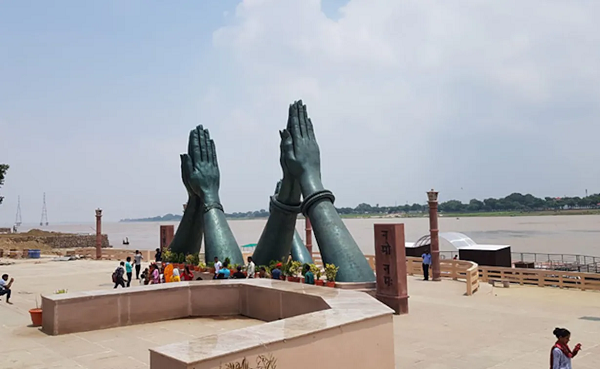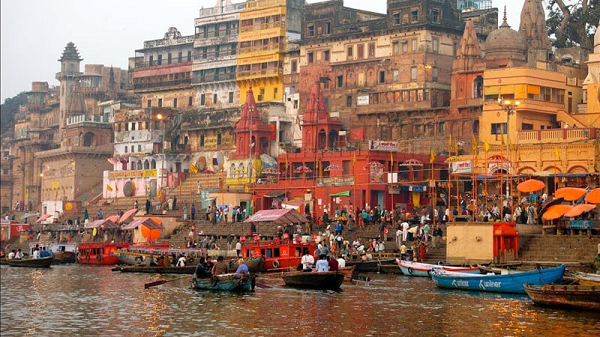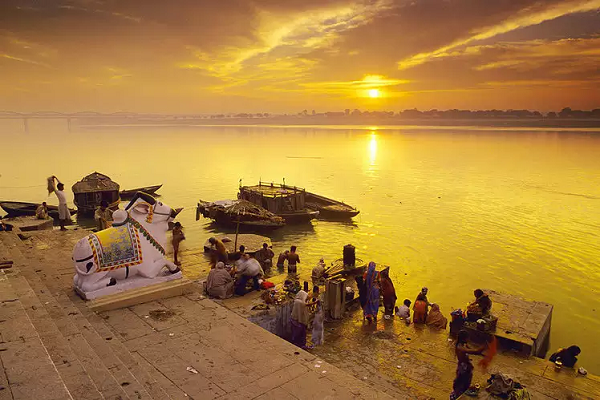Varanasi, also known as Kashi or Benares, is a city in northern India famous for its spiritual significance and vibrant cultural heritage. Nestled along the banks of the sacred river Ganges, Varanasi boasts a unique feature that sets it apart – its ghats. In this article, we will explore the ghats of Varanasi, their historical and cultural significance, and their adaptability in the face of changing times. These ghats have not only served as vital centers for religious and cultural activities but have also evolved to accommodate the needs of the city and its residents.
A Historical and Cultural Tapestry
The ghats of Varanasi are a living testament to the rich historical and cultural tapestry of the city. Each ghat has its own unique story and significance, woven into the fabric of Varanasi’s history.
These ghats have witnessed centuries of spiritual and cultural activities. They have been revered as sacred spaces where devotees perform religious rituals, seek blessings, and immerse themselves in the spiritual ambiance. The ghats serve as platforms for various religious ceremonies, including the daily Ganga Aarti, where priests offer prayers and light lamps to the river, creating a mesmerizing spectacle.

The historical significance of the ghats is deeply intertwined with mythology and legends. According to Hindu mythology, Lord Shiva is believed to have established Varanasi as a divine abode, making it a place of immense spiritual importance. The ghats are associated with mythological stories, saints, and sages who have enriched the spiritual heritage of the city.
The ghats also bear witness to significant historical events. They have been the site of important social and political gatherings, including the participation of freedom fighters during India’s struggle for independence. Many eminent personalities, including poets, scholars, and philosophers, have found inspiration along the banks of the Ganges, adding to the intellectual legacy of Varanasi.
Culturally, the ghats have served as melting pots of art, music, and literature. They have been a source of inspiration for poets and musicians, who have composed verses and melodies reflecting the mysticism and beauty of Varanasi. The ghats provide a platform for cultural events and festivals, showcasing the diverse performing arts of the region.
The architectural heritage of the ghats is equally captivating. They showcase a blend of different architectural styles, ranging from intricate stone carvings to grand palaces and temples. The ornate facades and elaborate structures add to the charm and allure of the ghats, transporting visitors to a bygone era.
The ghats of Varanasi form a historical and cultural tapestry that reflects the city’s deep-rooted spiritual traditions, legends, and artistic expressions. These ghats not only hold religious significance but also serve as a vibrant hub for cultural exchange, creating an enchanting experience for visitors and residents alike. As custodians of Varanasi’s heritage, it is our responsibility to preserve and celebrate these ghats as living symbols of our shared history and cultural legacy.
Adapting to Changing Times
The ghats of Varanasi have not remained static over the years but have shown remarkable adaptability to meet the changing needs of the city and its inhabitants. They have undergone transformations and renovations to align with the demands of a modern society while preserving their cultural essence.
One aspect of adaptation is the improvement of infrastructure and facilities. As the number of visitors to Varanasi has increased, the ghats have been revamped to accommodate the growing tourist influx. Modern amenities such as public toilets, bathing complexes, and seating areas have been introduced to enhance the comfort and convenience of pilgrims and tourists. These developments ensure a pleasant experience for visitors while maintaining the sanctity and significance of the ghats.
Another aspect of adaptation is the incorporation of technology. Varanasi has embraced digital advancements to streamline processes and enhance connectivity. Wi-Fi facilities have been introduced in some ghats, allowing visitors to stay connected and share their experiences. Additionally, digital signboards and information centers provide valuable guidance and knowledge about the ghats and their historical importance.
Environmental sustainability has also been a key consideration in the adaptation of the ghats. Efforts have been made to control pollution and promote eco-friendly practices. Waste management systems have been improved, and awareness campaigns have been conducted to encourage responsible waste disposal. Additionally, steps have been taken to minimize the use of single-use plastics and promote eco-friendly alternatives.

The adaptability of the ghats can also be seen in their economic significance. They have become centers of economic activity, providing opportunities for local businesses and artisans. The ghats are lined with shops selling religious artifacts, souvenirs, and traditional handicrafts, creating a vibrant marketplace for both locals and visitors. The economic activities generated by the ghats contribute to the livelihoods of the local community and help sustain the cultural heritage of the city.
Furthermore, the ghats have adapted to cater to diverse needs. While they remain important spiritual and religious spaces, they have also become venues for cultural events, music concerts, and performances. The ghats host festivals, including classical music and dance recitals, showcasing the rich cultural heritage of Varanasi to a global audience
The adaptation of the ghats of Varanasi to changing times demonstrates their resilience and ability to evolve while retaining their cultural significance. The improvements in infrastructure, incorporation of technology, and focus on environmental sustainability highlight the city’s commitment to providing a holistic experience for visitors. The economic opportunities and cultural events hosted at the ghats further contribute to the vibrancy of Varanasi. As the ghats continue to adapt and embrace change, they serve as a dynamic reflection of the city’s past, present, and future.
Preserving the Legacy
Preserving the legacy of Varanasi’s ghats is of utmost importance to ensure the continuity of their historical, cultural, and spiritual significance. Efforts have been made to safeguard and protect these invaluable assets for future generations.
The Archaeological Survey of India (ASI) plays a vital role in the preservation of the ghats. The ASI conducts regular inspections and assessments to monitor the condition of the ghats and their architectural elements. Conservation projects are undertaken to restore and maintain the structural integrity of the ghats, ensuring their long-term preservation.
Stringent regulations are in place to guide any new construction or renovation activities near the ghats. These regulations ensure that the traditional architectural style and heritage value of the ghats are maintained. The aim is to strike a balance between preserving the historical essence of the ghats while accommodating necessary improvements.
Awareness campaigns and educational programs are conducted to educate locals, visitors, and businesses about the importance of preserving the ghats. Emphasizing the cultural, religious, and historical significance of the ghats fosters a sense of responsibility and ownership among the community.
Collaboration between government bodies, local authorities, and community organizations is crucial in the preservation efforts. Stakeholders work together to address challenges such as pollution control, waste management, and sustainable tourism practices. These initiatives aim to strike a harmonious balance between tourism development and heritage conservation.

Furthermore, promoting responsible tourism practices is essential in preserving the legacy of the ghats. Visitors are encouraged to respect the sanctity of the ghats, follow designated pathways, and refrain from any activities that may harm the environment or disturb the cultural and spiritual atmosphere.
Preserving the legacy of Varanasi’s ghats requires a multifaceted approach involving government bodies, local communities, and visitors. By implementing strict regulations, conducting conservation projects, and raising awareness, the historical and cultural significance of the ghats can be protected for generations to come. Preserving the legacy ensures that Varanasi’s ghats continue to be revered as sacred spaces and remain a source of inspiration and spiritual solace for all who visit them.
Conclusion
Varanasi’s ghats are not just physical structures but living cultural landscapes that have adapted to the changing times while preserving their historical and spiritual significance. They are a testament to the resilience and adaptability of Indian riverscapes, showcasing the harmonious coexistence of tradition and modernity.
